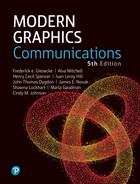Book Description
This is a clear, comprehensive, full-color introduction and reference for students and professionals who are creating engineering drawings and graphics with CAD software or by hand. It provides excellent technical detail and motivating real-world examples, illuminating theory with a colorful, highly-visual format complemented with concise text. Designed for busy, visually-oriented learners, this guide expands on well-tested material, fully updated for the latest ASME standards, materials, industries and production processes. Its up-to-date examples range from mechanical, plastic, and sheet metal drawings to modern techniques for civil engineering, architecture, and rapid prototyping. Throughout, clear, easy, step-by-step descriptions teach essential sketching and visualization techniques, including the use of 3D and 2D CAD. All color visuals are tightly integrated with text to promote rapid mastery. Colorful models and animations on a companion website bring the material to life, and hands-on projects and tear-out worksheets make this guide ideal both for learning and for ongoing reference.
